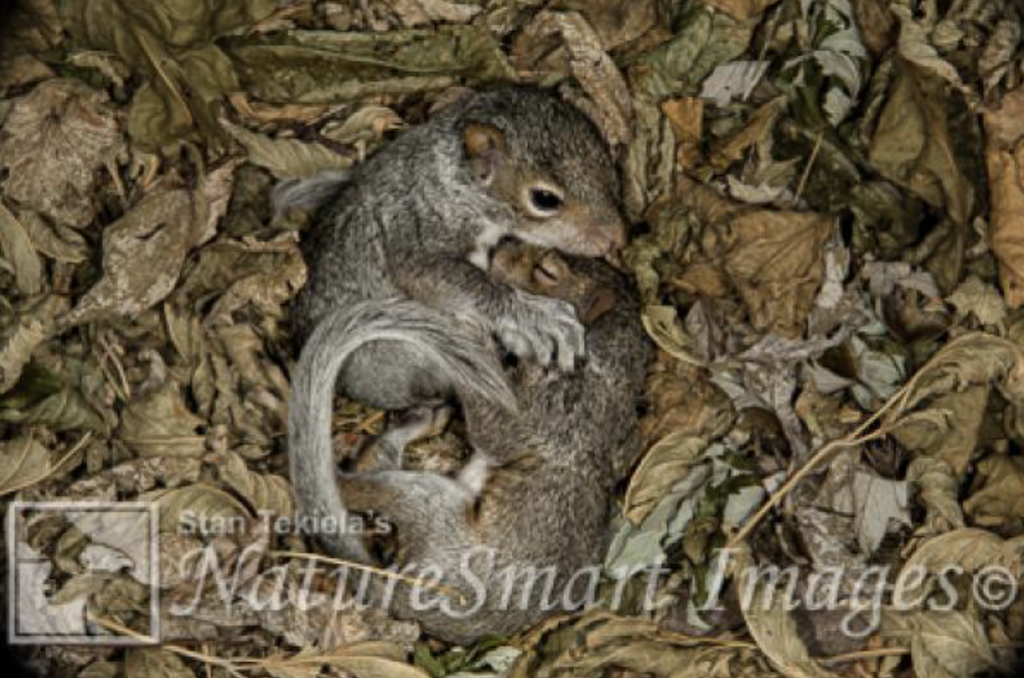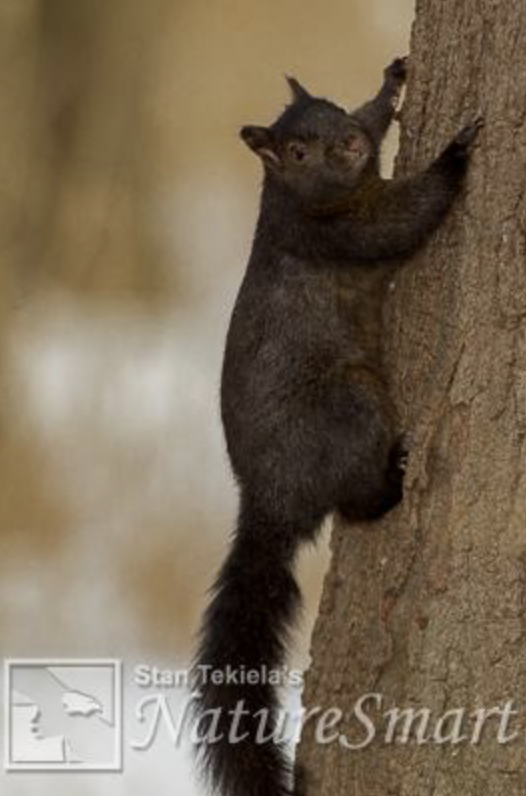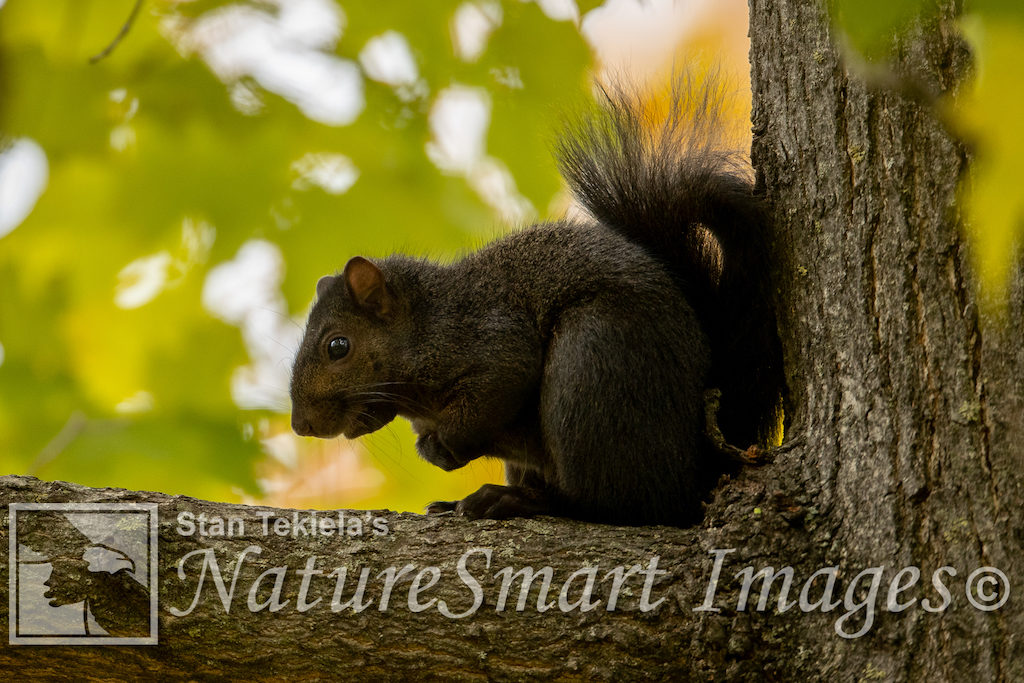
The Eastern Gray Squirrel—A Fascinating Little Fellow
Stan Tekiela often enjoys the more common side of nature—that which we see every day in our backyards and parks but that may go unnoticed. A prime example is the eastern gray squirrel (Sciurus carolinensis), which is likely the most common squirrel species in the United States and Canada. No matter if you live in the city, suburbs, or out in the boondocks, chances are you have gray squirrels running around.

There are many different kinds of squirrels in the United States and Canada. For example, we have eight different species of “tree” squirrels. As the name implies, these squirrels live in trees and the eastern gray squirrel is in this group. We have 56 species of “ground” squirrels, which includes chipmunks and prairie dogs. And we have three species of “flying” squirrels. These are nocturnal squirrels that also live in the trees but are obviously different from other squirrels with their ability to glide.
The eastern gray squirrel (or just gray squirrel) is the common backyard tree squirrel. I find these squirrels endlessly fascinating to watch and study. The other day when I was visiting my daughter in west-central Wisconsin, I noticed a ton of eastern gray squirrels that were very different looking because they were jet black. Many people may not know these exist.

The eastern gray squirrel has a dark side. There are scattered pockets of the eastern gray squirrel that are not gray at all but rather totally black. This is a condition called melanistic. How dark the squirrel is depends upon how much melanin is present in the hair of the squirrel. Often these squirrels will have a black body and a rusty colored tail. Some will have patches of white on their bellies or tail. No matter, these melanistic squirrels really stand out.
To be clear, the melanistic or black squirrels are exactly the same species as the gray squirrels, but the black ones have a variant form of a specific gene that produces more dark pigment. In other words, they have a rogue gene that causes them to have black pigment in their hair.
Recent research shows that we have more black morph squirrels now than in the past, partially because people have trapped and moved the black morphs around the country. Several universities trapped and moved the black morph squirrels to their campuses for research purposes. In addition, several cities in the south also imported the black morph squirrels. All of this has led to more black morph gray squirrels today than ever before, but they are still considered unusual or rare.

Just how rare are these black squirrels? It is estimated that less than 1% of all the eastern gray squirrels are melanistic or black. That translates to about one in every 10,000 gray squirrels. So, it wouldn’t be a stretch to say that they are not very common. However, in some pockets or regions the black morph squirrel is the dominant squirrel.
The range of the eastern gray squirrel stretches across the eastern half of the country, extending well up into Canada. Typically, the melanistic squirrels are found in northern states and Canada. Several studies have shown that the dark morph squirrels have lower heat losses and lower basal metabolic rates compared to the regular gray morphs during winter. The dark morph squirrels have lower energy costs for living in cold and wintery conditions compared to the gray morphs. Therefore, melanistic squirrels are more common in the northern portions of the species range.
Recent research has determined that the origins of the black morph gray squirrels has come from a close relative the fox squirrel (Sciurus niger). Also known as the eastern fox squirrel or Bryant’s fox squirrel, it is the largest species of tree squirrel native to America. The fox squirrel comes in a wide variety of colors, including black. It is believed that a black morph fox squirrel bred with an eastern gray squirrel and passed along the variant gene that causes the dark fur. Studies show that the same exact gene in the fox squirrel that causes the dark fur is the same as in the gray squirrel. From there, natural selection took over, and now we see the black morph gray squirrels all over the northern states.
You can follow Stan on Facebook and Twitter, or contact him via his web page. Stan’s nationally syndicated NatureSmart Column appears in more than 25 cities spanning 5 states (Minnesota, Wisconsin, Michigan, Illinois, and Pennsylvania) and is circulated to more than 750,000 readers.
You may also like Stan’s stories about the American Bison, the Greater Sage Grouse, and the amazing skills of Flying Squirrels.
If you enjoyed Stan’s post, consider one of his amazing nature books: Majestic Eagles, Wild Birds, or Backyard Birds: Welcomed Guests at our Gardens and Feeders.
If you enjoyed this story, sign up for our newsletter now!


